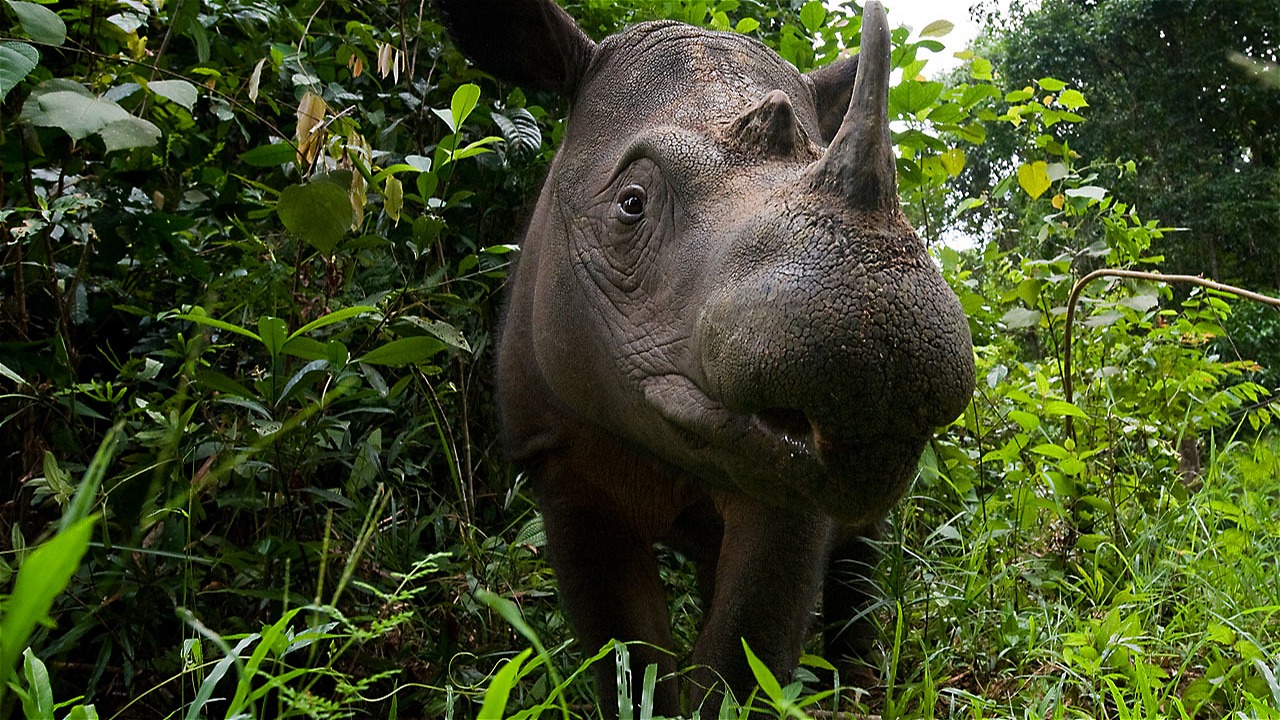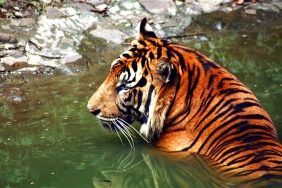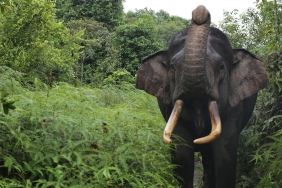TWO-HORNED RESCUE MISSION IN SOUTHERN SUMATRA (1)
By: Hijrah Nasir (Communication and Education Officer WWF-Indonesia Southern Sumatra Program)
Kubu Perahu is located within the Bukit Barisan Selatan National Park (TNBBS), precisely in West Lampung Regency. This tropical rainforest area in southern Sumatra is a hilly area with high biodiversity. Some time ago, I was fortunate to have the opportunity to participate in a field team activity in Kubu Perahu, Balik Bukit Resort. This activity is a field practicum of the Sumatran Rhino Survey Local Training and Experience Sharing in TNBBS which was attended by field officers from several conservation organizations in Lampung, including WWF-Indonesia, the Indonesian Rhino Foundation, and officers of the TNBBS Center, Community Forest Police Partners (MMP), and students of the UNILA Biology and Forestry Department which was carried out with the support of TFCA Sumatra (Tropical Forest Conservation Action Sumatra).
This training aims to share lessons learned from field surveys conducted by the Sumatran Rhino survey team in TNBBS, conduct a review of the Sumatran Rhino survey method manual, gather recommendations to increase knowledge on survey methods, ensure the survey team has the capacity to recognize signs of Sumatran Rhino presence, and can distinguish signs of Sumatran Rhino presence from other animals, especially tapir. Given the increasingly alarming presence of Sumatran Rhinos in TNBBS, this training is very important to obtain comprehensive information about the presence of rhinos and what must be done to save their population and habitat so that the management target is to increase the population for the recovery of the remaining Sumatran Rhino species.
Interestingly, the field team not only practiced about Sumatran Rhino survey methods, but also learned about wilderness survival techniques and evacuation and first aid (SAR) guided by Dedi Setiadi and Muhammad Abdurrahman, nature activity practitioners who are WANADRI education. Monitoring or patrolling in the TNBBS forest is indeed a daily job for them, but an understanding of survival techniques in nature and SAR techniques is important when in the wild.
"Since 1997, exactly twenty years ago, I have started conducting animal monitoring activities in the TNBBS area. In 2004, we still often met rhino and elephant tracks in Bengkunat. We studied rhino behavior, for example, studying within a 100-meter radius. If there are tracks, then we check if there are puddles within a 50-meter radius. If we find rhino tracks, we need other supporting evidence such as plintiran or puddles. If you're not sure, don't say it's a rhino. During our monitoring in the forest, we have never experienced conflict with animals, not even being pegged by a snake. We actually felt guarded by these animals. Now if there is conflict between humans and animals, especially when there are casualties, we humans need to evaluate. If animals are not disturbed, they will not disturb humans. From there, I learned to love the forest because if our forests are protected, then we will not have conflicts with animals. Until now, I still believe there are rhinos in TNBBS, but they always avoid humans," said Maman Suherman, one of the participants who is an officer of the TNBBS Center who shared his experience while conducting surveys and monitoring in the TNBBS forest.
As the spearhead in the implementation of the Sumatran Rhino survey in the field, the role of the field team is very important. The capacity of the team and their motivation are key to the success of the survey activities. Through this training, the team not only deepened their knowledge of the survey method material, but immediately practiced it in the field, such as the practice of installing camera traps, occupancy, trajectory, and practice of taking water E-DNA samples from rhino burrows.
Exploring the TNBBS forest with the field team is a special experience for me because I can directly participate in collecting data with the team in the field. Especially with a mission to find the presence of special animals such as the Sumatran Rhino. The steep and rugged terrain did not deter us. Often we had to crawl up rocky ridges, requiring extra vigilance and precision as we had to look for signs of animal presence along the occupancy paths and identify threats. All findings must be recorded by the team and documented for further data and information that can be analyzed. Unfortunately, in the occupancy simulation on the grid given to us that day, there was no trace of rhinos. We only encountered the footprints and feces of tapirs, deer, pigs and deer burrows. We also encountered signs of threat in the form of illegal logging of cinnamon trees. Logging within the national park is one of the biggest threats to the rhino's habitat. The endangered species is increasingly homeless and living fragmented lives within the TNBBS forest, making it increasingly difficult for field teams to find signs of their presence. With the existence of rhinos increasingly threatened in southern Sumatra, do we want our children and grandchildren to only hear stories or tales about Sumatran rhinos?





